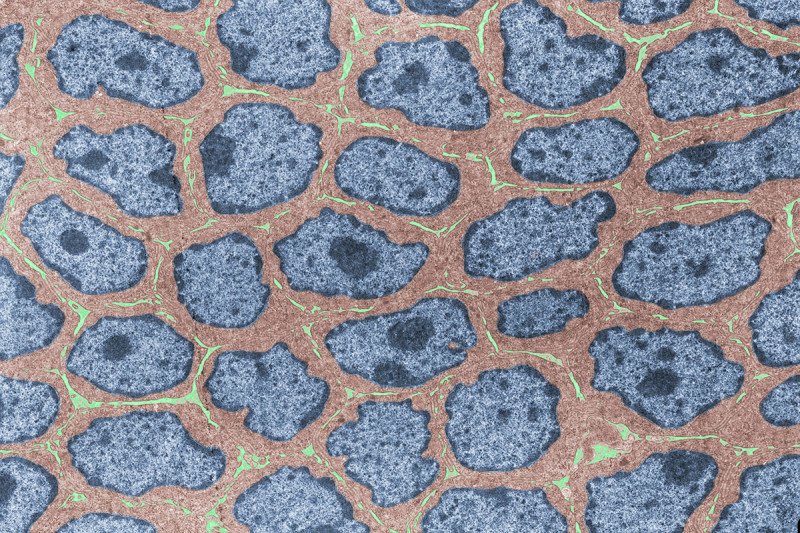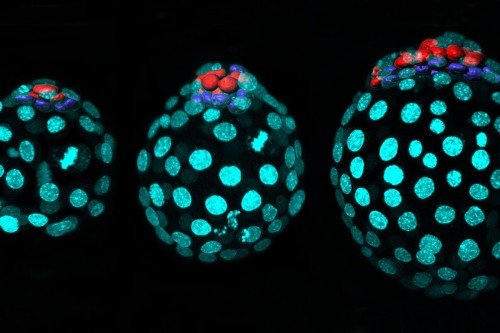
Epithelial cells, like these in the small intestine, form protective barriers.
The human body is 70% water, so it’s remarkable that we don’t leak like a punctured garden hose. For those tight seals keeping our insides in and our outsides out, we have our epithelial cells to thank.
Epithelial cells join together to form flat, contiguous walls. These walls line the insides and outsides of the body. Not only do they keep vital fluids in, they also keep harmful microbes out.
Epithelial tissues are built during embryonic development and must be maintained and repaired throughout life. The establishment and upkeep of these protective layers require that epithelial cells undergo what’s called an epithelial-to-mesenchymal transition (EMT). During an EMT, epithelial cells let go of one another and migrate into gaps in the tissue that need to be filled. EMTs are vital for embryo formation and tissue repair but can also become a problem in diseases like fibrosis and cancer.
Scientists at the Sloan Kettering Institute have now determined how epithelial cells undergo EMTs. Jessie Su and colleagues from the laboratory of SKI Director Joan Massagué, working in collaboration with the SKI laboratory of Kat Hadjantonakis, asked how the most potent activator of EMT, the hormone transforming growth factor ß (TGF-ß), triggers and adjusts each EMT to a particular context.
The investigators found that TGF-ß, acting through a combination of messenger molecules called SMAD and RREB, orchestrates EMT in embryo and adult cells. In the cells of embryos, SMAD and RREB trigger a developmental EMT. This is when epithelial cells (now in a more mesenchymal state) migrate and differentiate to form new parts of the embryo.
In adult epithelial cells, SMAD and RREB trigger a fibrogenic EMT. This is when epithelial cells migrate and simultaneously trigger the production of collagen to repair damaged tissue. This vital process can become a problem when it lacks proper regulation, since an excess of collagen deposited in an area leads to fibrosis, or scarring. Lung fibrosis and kidney fibrosis are major medical problems that disrupt and debilitate the normal functions of these organs. And in cancer, fibrosis occurring inside tumors promotes their growth and spread.
The new results, published on January 8 in the journal Nature, will aid the development of antifibrosis therapies to treat these diseases.





